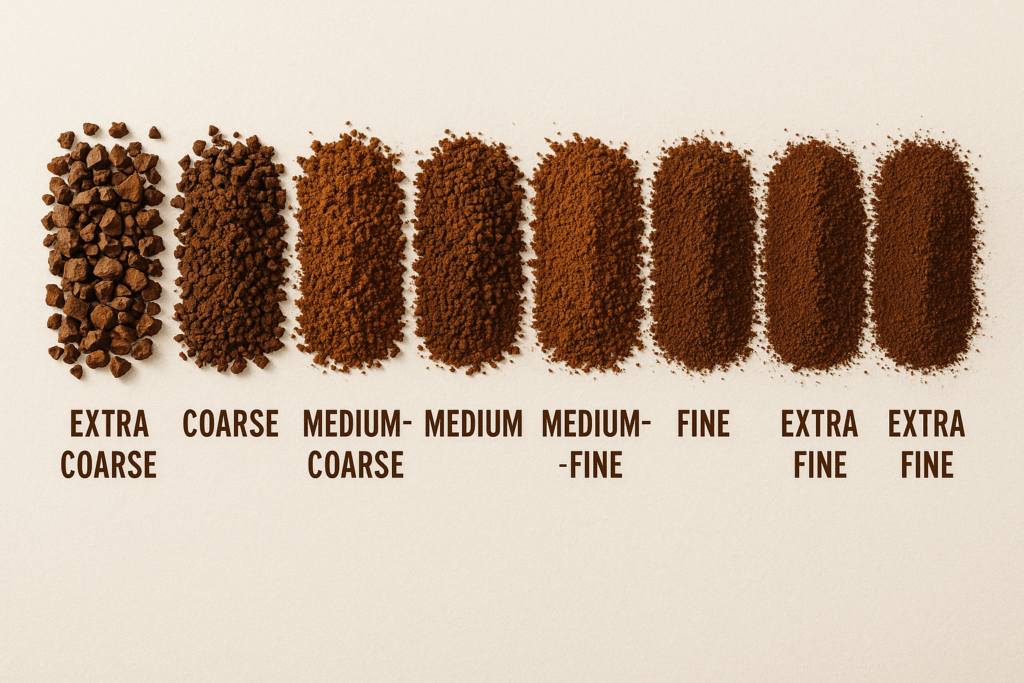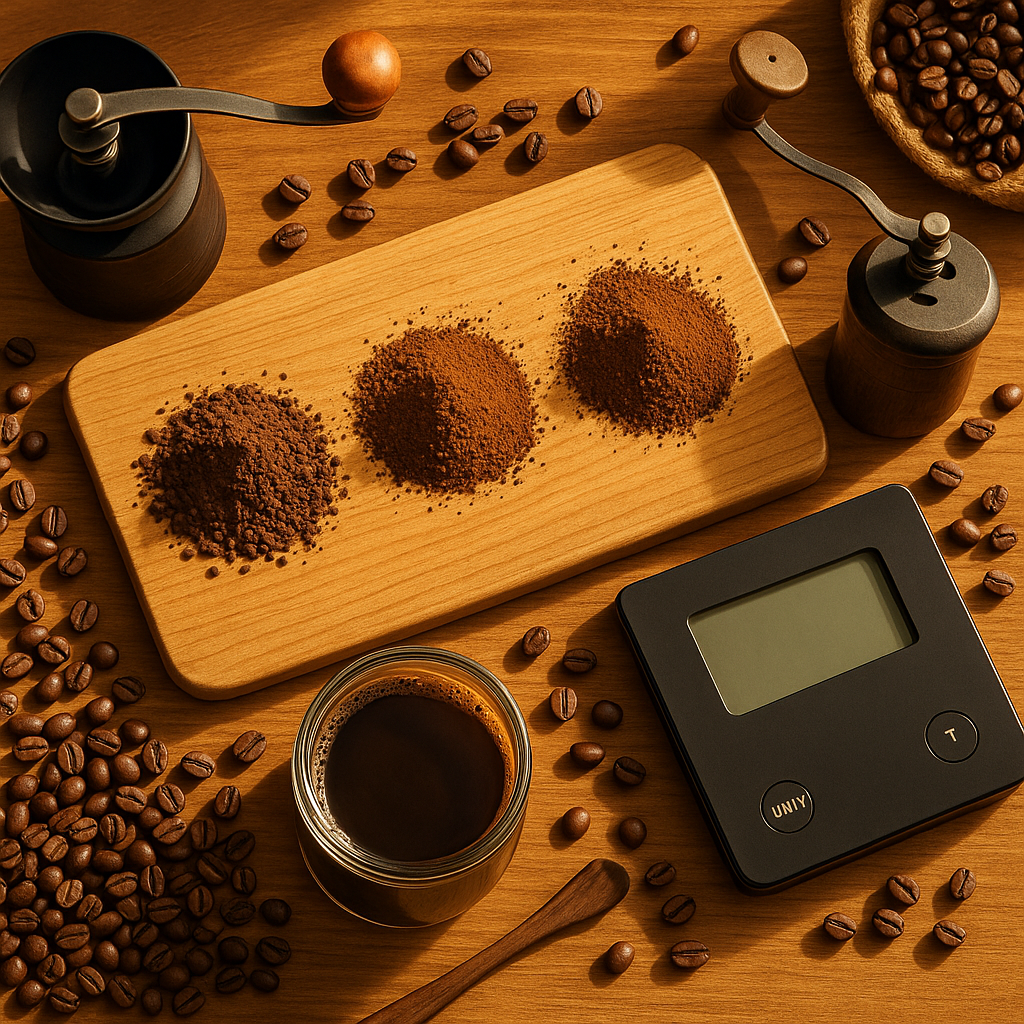Get the grind right — every time
If your coffee tastes bitter, sour, or just off, it might not be your beans — it’s probably your grind. Getting the right grind size is one of the most important parts of brewing better coffee at home, yet it’s also one of the most overlooked. Whether you’re using a French press, Moka pot, or pour-over cone, your grind controls how fast water extracts flavour — and that can make or break your brew. This guide walks you through all major grind sizes, explains what they look like, and shows exactly which grind to use for which method. No fluff. Just better coffee.
Why Grind Size Matters
Coffee brewing is a chemical reaction. The size of your grind affects how quickly water passes through the coffee and how much flavour it extracts. A grind that’s too coarse will under-extract, leaving your coffee weak, sour, or flat. Too fine, and you’ll over-extract — getting bitterness, dryness, or harsh flavours. Matching your grind to your brew method gives you better flavour, more balance, and repeatable results. That’s why baristas obsess over grind — and why you should too.
🔗 Related: What Is the Right Coffee-to-Water Ratio?
The 7 Main Coffee Grind Sizes (with Texture Examples)
Here’s a breakdown of common grind sizes, what they feel like, and which brew methods they suit best.
1. Extra Coarse
- Texture: Rock salt, peppercorns
- Use for: Cold brew
- Notes: Very slow extraction. Needs 12+ hours steep time.
2. Coarse
- Texture: Sea salt
- Use for: French press, percolator
- Notes: Allows long steeping without over-extraction.
3. Medium-Coarse
- Texture: Rough sand
- Use for: Chemex, Clever dripper
- Notes: Balances clarity and body. Slightly faster flow than coarse.
4. Medium
- Texture: Table salt or rough sugar
- Use for: Drip machines, pour over
- Notes: The “default” grind for many pre-ground bags.
5. Medium-Fine
- Texture: Fine beach sand
- Use for: Aeropress (2–3 min brew), V60
- Notes: Slightly slower flow, enhances body.
6. Fine
- Texture: Floury, soft, like caster sugar
- Use for: Moka pot, Aeropress (short brew)
- Notes: Needed for pressure-based brewing.
7. Extra Fine
- Texture: Powdery, like icing sugar
- Use for: Turkish coffee
- Notes: Not common outside Turkish or Middle Eastern setups.

Visual Grind Size Chart
Use this visual reference to compare grind sizes side by side. Perfect for checking your grind if you’re using a manual or blade grinder.
🔗 Related: Best Manual Coffee Grinders in the UK
How to Know If Your Grind Is Right
Signs your grind is too coarse:
- Coffee tastes weak, watery, sour
- Brew is too fast (e.g. V60 finishes in <2 minutes)
- Cold brew has no depth or punch
Signs your grind is too fine:
- Bitter, dry or overly strong coffee
- Brew takes too long (e.g. French press is silty and unpleasant)
- Moka pot sputters or doesn’t brew fully
Grinder Types: Which One to Use
Burr Grinders (Recommended)
- Crushes beans evenly
- Gives consistent results
- Lets you choose exact grind size
- Ideal for French press, Moka, Aero, pour-over
Blade Grinders (Not Ideal)
- Chops beans unevenly
- Can overheat beans
- Creates dust and chunks
- Only suitable for cold brew or general use
Matching Grind Size to Brew Method (Quick Table)
| Brew Method | Recommended Grind |
|---|---|
| Cold Brew | Extra Coarse |
| French Press | Coarse |
| Chemex | Medium-Coarse |
| Drip Machine | Medium |
| V60 / Pour Over | Medium-Fine |
| Moka Pot | Fine |
| Turkish | Extra Fine |
Related Posts to Explore
- How to Use a Moka Pot
- French Press Brewing: The Perfect Ratio
- Why Is My Coffee Watery?
- Best Coffee Scales for Brewing
Final Thoughts
Grind size might seem like a small detail, but it’s the foundation of flavour. Once you understand how each grind affects extraction, you’ll brew more confidently — and waste less coffee. Get yourself a good grinder, follow the chart, and trust your taste buds. If something’s off, it’s probably the grind.
💌 Want coffee guides and brew charts in your inbox? Subscribe to The Daily Bean

